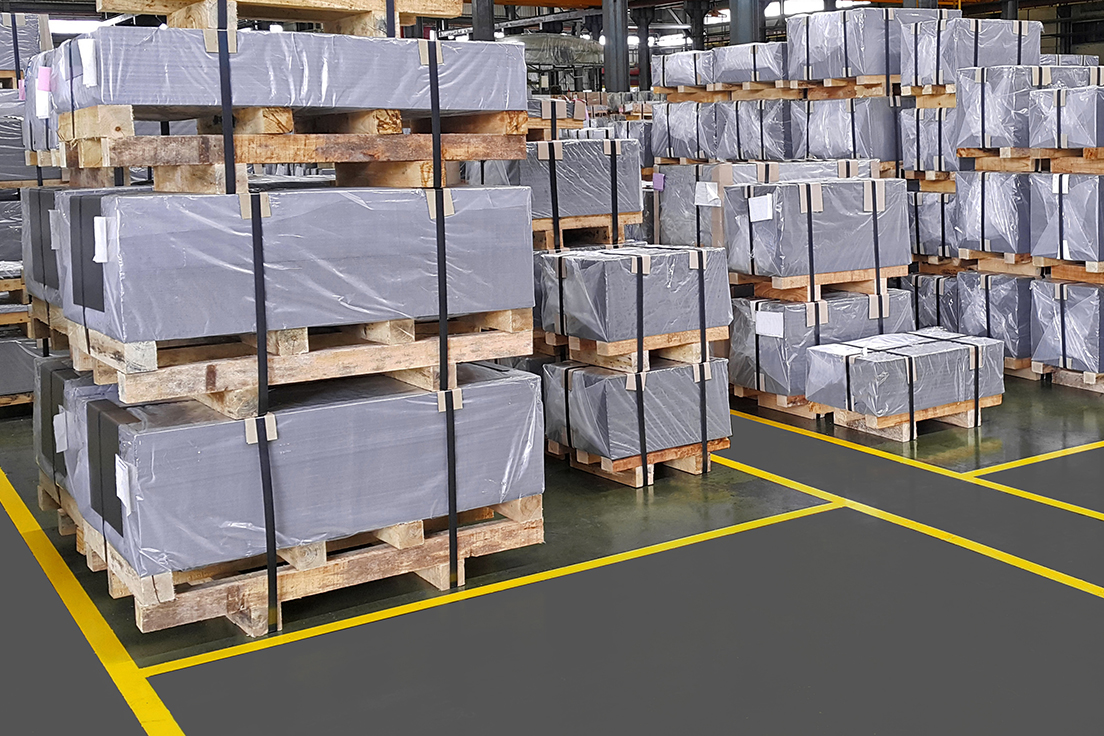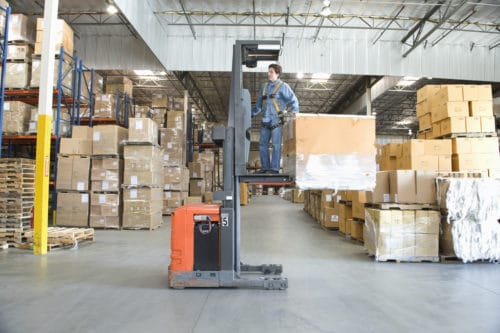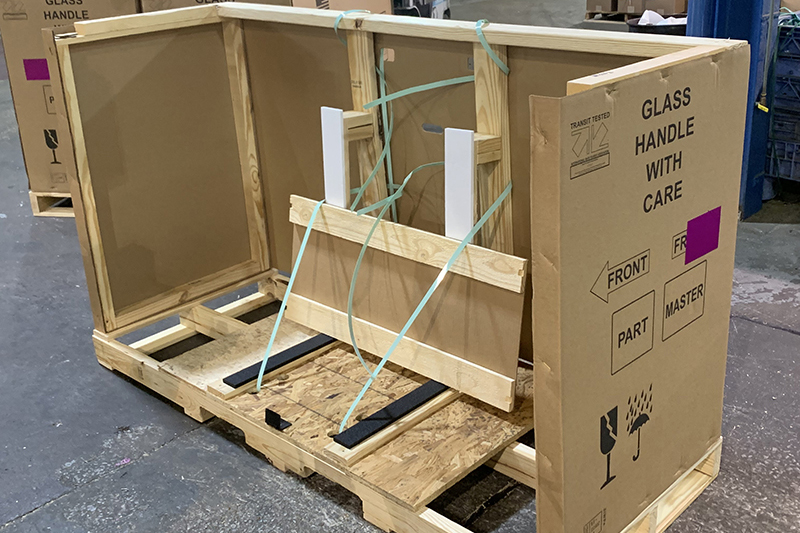Reliable Industrial Recycling Solutions for Sustainable Product Packaging: A Comprehensive Overview
In today's significantly environmentally-conscious world, the need for sustainable product packaging solutions has actually never been greater. To fulfill this need, services across industries are actively looking for effective commercial recycling services. Nonetheless, navigating the facility landscape of sustainable packaging can be challenging without a detailed overview. That's where this extensive overview on effective commercial recycling solutions for sustainable packaging can be found in. By checking out crucial areas such as packaging product choice, making for recyclability, executing reusing facilities, collaborating with recycling companions, and monitoring and measuring reusing success, this guide will certainly outfit you with the understanding and tools needed to make educated choices and drive favorable modification within your organization. Whether you're a product packaging specialist, sustainability supervisor, or just thinking about the subject, this overview will supply beneficial insights and strategies to assist you browse the world of sustainable product packaging.
Packaging Product Selection
The option of packaging materials plays an important role in making certain the sustainability of commercial reusing solutions. The choice of products is essential in minimizing ecological effect and optimizing recycling effectiveness when it comes to lasting product packaging. Picking the right materials can assist decrease waste generation, preserve resources, and advertise a round economic climate.
One important factor to take into consideration in packaging product choice is recyclability - bulk container recycling. Products that can be quickly reused and integrated back right into the production cycle are favored. For instance, materials like cardboard, paper, glass, and specific kinds of plastics can be reused multiple times without shedding their quality. On the various other hand, materials that are tough to recycle, such as combined plastics or non-recyclable compounds, can create challenges for the recycling process and might wind up in incinerators or land fills.
An additional factor to consider is using renewable and naturally degradable materials. Product packaging made from renewable energies, such as plant-based plastics or biopolymers, can assist reduce dependence on nonrenewable fuel sources and mitigate environment adjustment. In addition, biodegradable materials damage down normally with time, decreasing the build-up of waste in land fills.
Additionally, the weight and quantity of product packaging materials must be reduced to reduce transport prices and power intake. Lightweight materials not just call for less resources throughout production yet additionally add to lower carbon discharges during transport.
Designing for Recyclability
In order to make certain the recyclability of packaging products, thoughtful style is necessary. Creating for recyclability entails creating packaging that can be quickly sorted, separated, and refined in recycling centers. One crucial aspect of designing for recyclability is the selection of products. Packaging developers should focus on the usage of products that are widely accepted for reusing and have actually developed recycling frameworks. Products such as glass, light weight aluminum, and specific kinds of plastic, like pet dog and HDPE, are commonly reused and must be favored over materials that are difficult or expensive to reuse.
An additional vital factor to consider in making for recyclability is the elimination of unnecessary elements or products. By decreasing the number of layers, layers, and extra components, product packaging can be made less complex and simpler to reuse. Furthermore, designers should aim to minimize the usage of mixed products, as they can complicate the recycling procedure.

Implementing Recycling Infrastructure
Effective application of recycling framework is critical for the success of commercial recycling services. Without correct framework in position, the recycling process comes to be inefficient and inadequate, impeding the overall goal of sustainable packaging.
To apply reusing framework successfully, a number of key aspects need to site link be taken into consideration. To start with, there must be a well-organized collection system that helps with the separation and collection of recyclable products. This can include designated recycling bins in public spaces, as well as collaborations with waste monitoring firms for curbside pickup and sorting.
As soon as collected, the recyclable materials need to be carried to recycling centers in a prompt way. This needs efficient logistics and transport networks, ensuring that the products get to the ideal facilities without delay.
At the recycling facilities, progressed sorting and handling innovations must be in place to divide various kinds of materials successfully. This consists of the usage of automated sorting machines, optical scanners, and hand-operated sorting strategies.
Additionally, there should be a robust market need for recycled products. This can be achieved with partnerships with makers and sectors that make use of recycled materials in their production processes. Developing a stable market for recycled materials incentivizes the reusing market and promotes the round economic situation.
Teaming Up With Recycling Allies

One secret facet of collaborating with reusing companions is the establishment of clear interaction channels. It is necessary to establish open lines of interaction to facilitate the exchange of information, updates, and responses. This permits both celebrations to remain informed regarding the progress of reusing efforts and deal with any kind of challenges or issues that might occur.
In addition, partnership can entail collaborations in creating and executing recycling programs. Recycling partners can provide valuable understandings and advice in creating effective collection systems and determining the most appropriate recycling innovations. By working together, companies and reusing companions can maximize the recycling process and decrease waste.
Furthermore, partnership can extend past the functional elements of recycling. It can likewise encompass campaigning for and education and learning initiatives. By joining forces, services and reusing partners can elevate awareness about the relevance of recycling and promote the adoption of sustainable packaging methods among consumers and various other stakeholders.
Monitoring and Measuring Recycling Success
To guarantee the efficiency of industrial reusing solutions and the accomplishment of lasting packaging objectives, it is crucial for organizations and their recycling partners to develop a thorough system for tracking and determining recycling success (industrial packaging solutions). Tracking and determining reusing success allows services to examine the impact of their reusing efforts, Visit Your URL determine areas for renovation, and set significant targets for future progress
One method to track recycling success is via the use of data collection and analysis devices. By accumulating data on the quantity of packaging waste produced, the percent of waste that is recycled, and the kinds of materials being recycled, organizations can gain useful insights into their recycling performance. This data can then be assessed to identify patterns, patterns, and areas of inefficiency.
An additional vital explanation facet of monitoring and gauging reusing success is establishing clear and standardized metrics. This enables companies to compare their efficiency against market criteria and track their development gradually. Metrics such as reusing prices, waste diversion rates, and greenhouse gas emissions can provide a quantitative step of an organization's reusing success.

Conclusion
To conclude, carrying out effective commercial recycling services for sustainable packaging needs careful consideration of product packaging material choice, creating for recyclability, implementing reusing facilities, collaborating with reusing companions, and monitoring and measuring recycling success. By integrating these practices, organizations can add to a more environmentally-friendly and sustainable technique to product packaging, reducing waste and advertising the circular economic climate.
By exploring essential areas such as product packaging material choice, designing for recyclability, applying reusing framework, working together with reusing partners, and monitoring and determining reusing success, this guide will certainly equip you with the knowledge and tools necessary to make educated choices and drive positive change within your company. Product packaging developers ought to focus on the use of materials that are extensively approved for reusing and have established recycling infrastructures.Partnership with reusing partners is important for the successful execution of commercial reusing options and the success of lasting packaging goals. By signing up with forces, organizations and recycling companions can raise understanding regarding the significance of recycling and advertise the fostering of sustainable product packaging techniques among consumers and other stakeholders.
By gathering data on the amount of packaging waste generated, the portion of waste that is recycled, and the types of products being reused, services can gain valuable insights into their recycling performance.